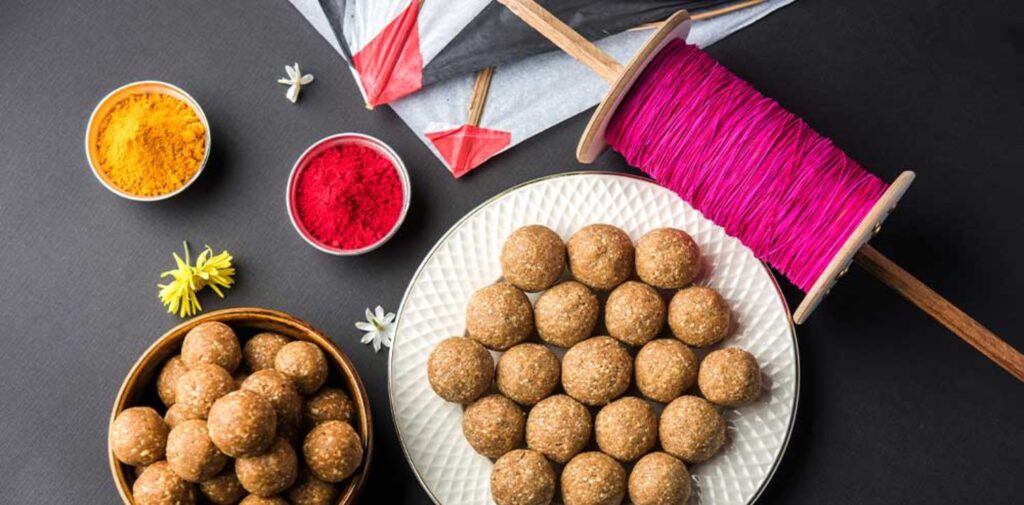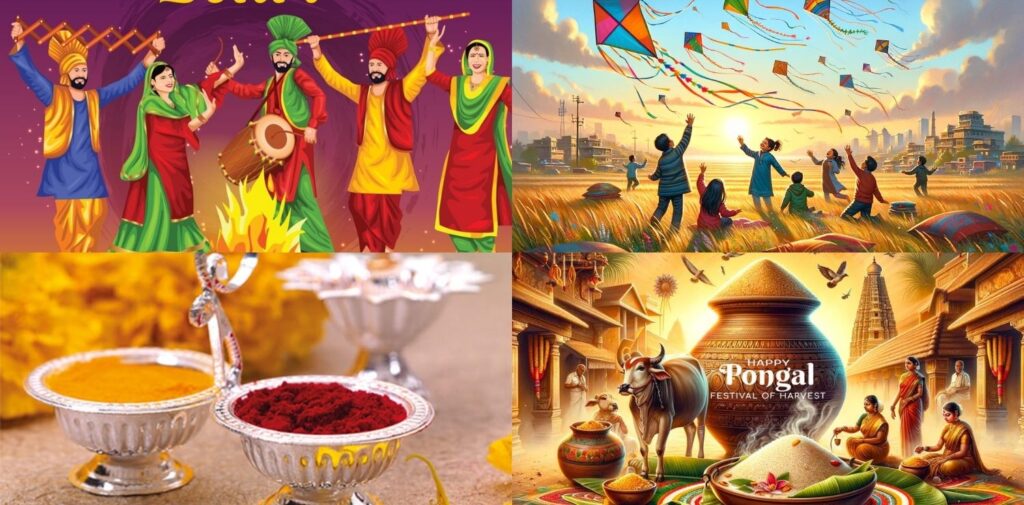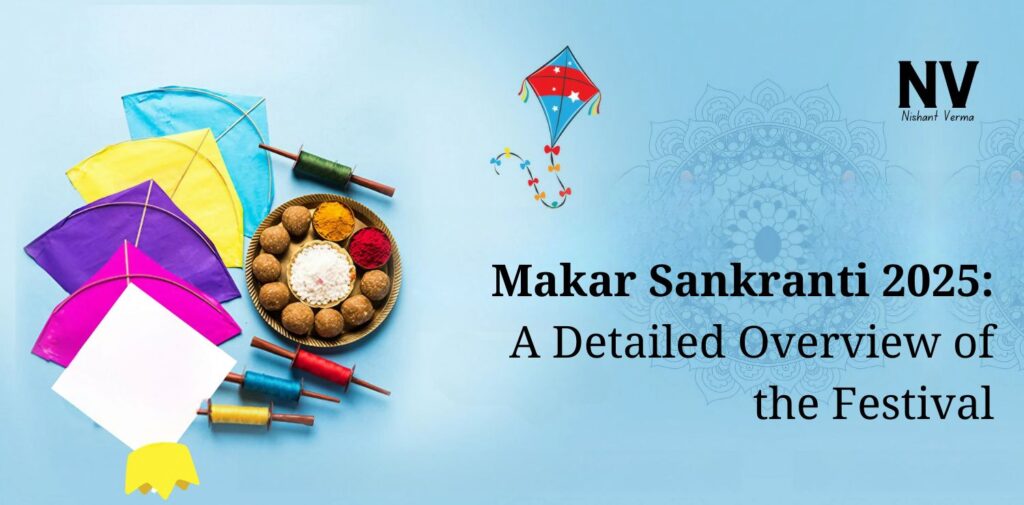Makar Sankranti is a widely celebrated festival in India that marks the transition of the Sun into the zodiac sign of Capricorn (Makar) and the end of the winter solstice. In 2025, this important festival will be observed on January 14. Makar Sankranti 2025 has significant cultural, agricultural, and religious importance in various parts of the country. Though the festival is known by different names and is celebrated with distinct regional variations, it unites people in a shared celebration of nature, harvest, and community spirit.

Astrological Significance of Makar Sankranti
Makar Sankranti holds profound astrological significance as it marks the day when the Sun moves from the zodiac sign of Sagittarius (Dhanu) to Capricorn (Makar). According to Hindu astrology, the Sun’s transit into Capricorn is considered an auspicious time for performing rituals and seeking blessings for prosperity. This movement is symbolic of the end of the harsh winter and the beginning of longer days with the Sun moving northward, a phase known as ‘Uttarayan’. The day is also considered a time of positive energy and spiritual growth.
The date of Makar Sankranti is fixed in the solar calendar, unlike most other Hindu festivals, which are based on the lunar calendar. This is why Makar Sankranti is always celebrated on the 14th or 15th of January each year, making it one of the few festivals in India with a fixed date. This also highlights the deep connection between the solar system and traditional Indian culture.

Cultural and Regional Variations
Makar Sankranti is celebrated across India, but the way in which it is observed varies significantly from region to region. Each state and community has its own traditions, rituals, and customs associated with this festival.
- Punjab: Lohri and Maghi In Punjab, Makar Sankranti is primarily celebrated as Lohri on the night before the main festival. Lohri marks the end of winter and the arrival of the harvest season. People gather around bonfires, sing traditional songs, dance the Bhangra and Gidda, and offer sesame seeds, jaggery, and sugarcane to the fire. The festival is also a celebration of the harvest of sugarcane and other crops.After Lohri, the following day marks Maghi, a day when Sikhs commemorate the sacrifices made by the forty Sikh martyrs. The day is marked by processions and prayers at gurudwaras. In Punjab, the significance of Makar Sankranti lies in the celebration of the agricultural harvest and the joyous anticipation of a bountiful season.
- Gujarat: Uttarayan and Kite Flying In Gujarat, Makar Sankranti is celebrated with great fervor as Uttarayan. This is a major festival in the state, attracting people from across the country and abroad, especially for the famous kite-flying event. On this day, the skies are filled with colorful kites of various sizes, and people compete in kite-flying contests. The tradition of kite flying is not just for fun but also symbolizes the victory of light over darkness and good over evil. In addition to kite flying, Gujarat also celebrates with sweets made of til (sesame seeds) and jaggery, particularly tilgul, a sweet treat offered to friends and relatives. The people greet each other by saying “Tilgul ghya, god god bola” (Eat tilgul and speak sweet words).
- Maharashtra: Sankranti and Haldi-Kumkum Makar Sankranti in Maharashtra is an occasion for family gatherings and socializing. Women in particular celebrate this day by applying haldi (turmeric) and kumkum (vermillion) to each other’s foreheads, symbolizing good health, prosperity, and happiness. They also exchange tilgul sweets and offer prayers for the well-being of their families. It is a day of community interaction, where people visit relatives and share festive treats. The sweet preparations made from sesame seeds and jaggery, such as tilgul and til laddoos, are an integral part of the Maharashtra Sankranti tradition. The til seeds are believed to be a source of warmth, which is important during the cold winter months.
- Tamil Nadu: Pongal In Tamil Nadu, Makar Sankranti is celebrated as Pongal, a four-day harvest festival that takes place around the same time as Makar Sankranti. The first day of the festival is called Bhogi, when old items are discarded and a bonfire is lit. The second day is the main Pongal day, during which families prepare and offer a dish made from newly harvested rice called ‘Pongal’. The third day, Mattu Pongal, is dedicated to cattle, particularly cows, which are adorned and celebrated for their role in the harvest. The fourth day, Kaanum Pongal, is a day for visiting relatives and celebrating with friends and family. The celebration of Pongal is deeply rooted in the agrarian lifestyle of the Tamil people, and the festival symbolizes gratitude to the Sun, nature, and the animals that help in farming.
- Uttar Pradesh and Bihar: Khichdi In the northern states of Uttar Pradesh and Bihar, Makar Sankranti is often called Khichdi. On this day, people prepare a special dish called Khichdi, made of rice and lentils, and offer it as part of religious rituals. It is considered a purifying food and is believed to bring health and prosperity. Devotees take a dip in the holy Ganges river as part of the religious observances. The day is marked by visiting temples and offering prayers for the well-being of the family and the community.
Religious and Spiritual Significance
Makar Sankranti holds immense religious significance, especially among Hindus. It is believed to be the day when the Sun enters the zodiac sign of Capricorn, which is associated with Lord Vishnu. Devotees believe that performing rituals, taking a holy dip in rivers (particularly the Ganges, Yamuna, and Godavari), and offering prayers on this day can wash away sins and bring blessings for the year ahead.
The spiritual significance of Makar Sankranti is also tied to the concept of ‘Uttarayan,’ the northward journey of the Sun. According to Hindu mythology, this is a time when the Sun’s energy becomes stronger, which has a positive effect on human lives. It is believed that those who pass away during the period of Uttarayan go straight to heaven, as this is considered the most auspicious time for the soul’s journey.

Agricultural Importance
Makar Sankranti is intrinsically linked to agriculture, particularly the harvest season. In many regions of India, this festival marks the end of the winter sowing and the beginning of the harvest of rabi crops such as wheat, barley, and mustard. The festival is thus seen as a time of thanksgiving to nature for a bountiful harvest.
Farmers across the country celebrate the festival as a symbol of a good harvest and new beginnings. The rituals and celebrations associated with Makar Sankranti often reflect this connection with agriculture, from the offering of harvested grains to the Sun god, to the consumption of food made from the new crop.
Conclusion: Makar Sankranti 2025
Makar Sankranti is a multifaceted festival that carries diverse cultural, religious, and agricultural meanings for millions of people across India. The festival’s celebrations are marked by a combination of joyous socializing, vibrant rituals, and spiritual observances. Whether through the flying of kites in Gujarat, the preparation of Pongal in Tamil Nadu, or the exchange of sweets in Maharashtra, the essence of Makar Sankranti is universal – it is a celebration of nature’s bounty, the triumph of light and warmth over darkness and cold, and a time for communities to come together in harmony and gratitude.
In 2025, as Makar Sankranti falls on January 14, people from all walks of life will continue to embrace the spirit of the festival, keeping alive age-old traditions and customs while also adapting them to modern times. For those who celebrate, Makar Sankranti is more than just a festival – it is a reminder of the rhythms of nature, the interconnectedness of humanity, and the joy that comes with new beginnings.




